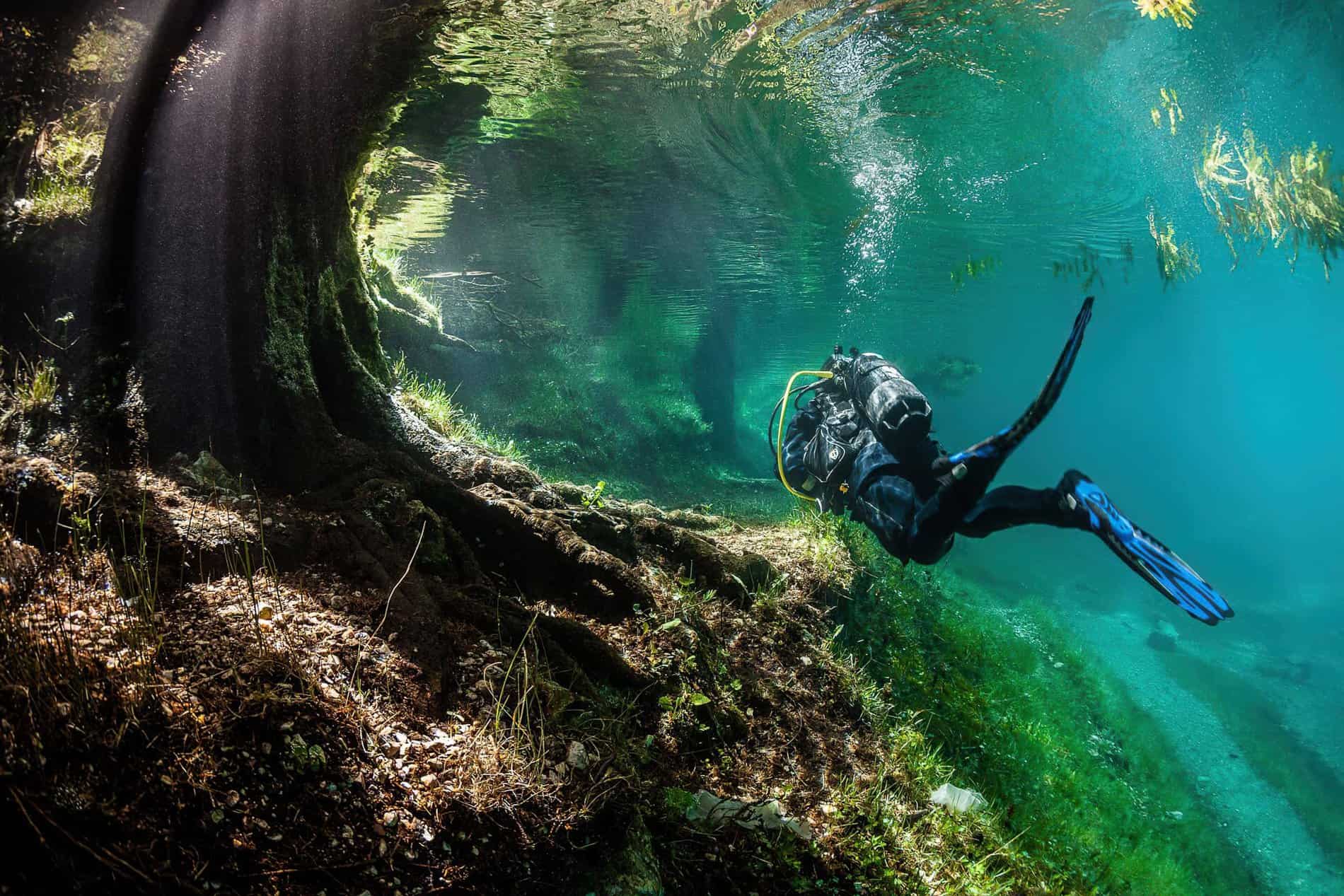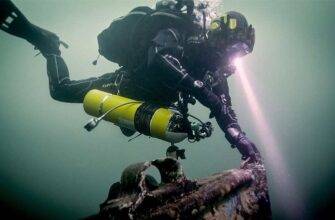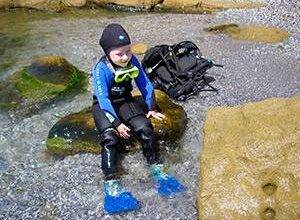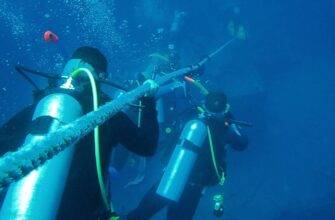
The main thing to understand and realize is that diving in rushing rivers is very dangerous. River diving, unlike recreational diving, requires special techniques and equipment. Read more about river diving below.
River diving requires you to be in good, if not excellent, physical shape. Moving on the bottom of the river takes a lot of energy. The diver must pace himself and also consider the endurance of even the weakest team members.
The diver’s “moving” and “not moving” strategy.
Each diver should have a separate dive plan. Before a dive, one diver is designated as a mover and the other as a non-mover. If the divers are separated in the water, they look around, and both move to the wall that runs along the shore. Having reached the wall, the “non-moving” stops for 3 minutes, then rises to the surface, fixes the position and marks its location with a special “peg” (river stick) and corrugated steel structure.
“Moving” (usually the most experienced river diver) moves along the wall against the current for 2 minutes, then downstream for 1 minute, and surfaces. At the surface, divers wait 10 minutes and, if no contact can be made, call for rescuers. If divers were ascending along the wall, the last known location point can be established quite easily when searching. This plan is suitable for experienced divers diving along a steep bank in an intense current.
The “moving” and “not moving” strategy of the diver is effective along a steep shore.
The point of all types of diving is to move in harmony with the environment. In any confrontation between man and nature, man loses. That is why the secret of successful river diving is to move in harmony with the current, but under your control.
The basic rule: “keep your flippers below your heel. As you wade through the bottom of the river, spread your legs like a spider and work with your flipperskeeping them parallel to the bottom.
“Stick and Glide.”
The key to controlling yourself in the river is the “river stick.” It helps to move upstream, fix a certain position, control speed. The basic technique of using the “peg” is “stick and slide”. The force of the current carries downstream, and “peg” acts as a brake, controlling the speed and direction. It’s used all the time.
“Stick and slide”: The “peg” controls direction and speed. The free hand moves in front and stabilizes the position. Read more in the article “Underwater river hunting“.
The “caterpillar” technique
A “peg” also allows you to go against the current with physical effort. You either cling to something (a stone, a branch, etc.) with it, or stick it into the bottom, if possible. The “caterpillar” technique is used: they fix a “peg”, raise their back in an arc, and pull themselves up. The stream passes over the arc, which helps the diver to stay on the bottom.
Conclusion
Diving in rivers, as in any specific environment, has its own requirements, equipment, techniques. The brutal nature of intense currents has robbed many divers of their lives. River diving definitely requires different techniques and equipment than conventional OVD diving.
Read More:




